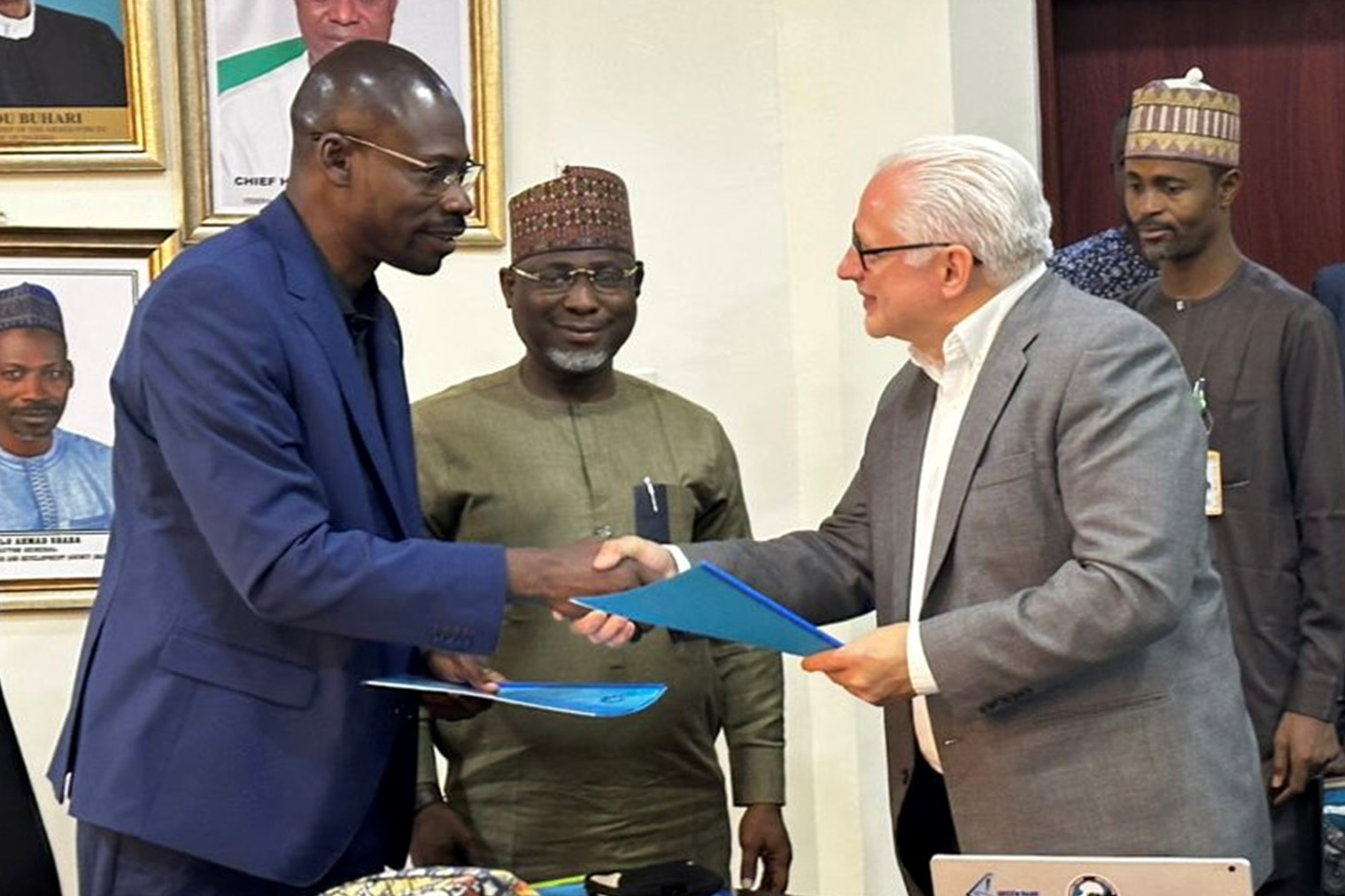AUI will present at the 247th meeting of the American Astronomical Society in Phoenix from January 4-8.
Recent News
ALMA Helps Unmask Monster Black Hole Behind Record-Breaking Cosmic Burst
Astronomers have used the Atacama Large Millimeter/submillimeter Array (ALMA) together with a suite of space- and ground-based telescopes, to study AT 2024wpp, the most luminous fast blue optical transient (LFBOT) ever observed.
Astronomers Make First Radio Detection of Rare Supernova Type, Revealing Secrets of Stellar Death
Astronomers using the U.S. National Science Foundation Very Large Array have captured the first-ever radio signals from a rare class of stellar explosion known as a Type Ibn supernova.
Expanding International Collaboration in Space

AUI signs MoU with the Nigerian National Space Research and Development Agency (NASRDA). Left: Dr. Ahmed Halilu Shabar, Director General – NASRDA, Center: Barrister Isah, Head Legal Department – NASRDA, and Right: Tim Spuck, Director of Education and Public Engagement – AUI.
AUI signs Memorandum of Understanding with the National Space Research and Development Agency of Nigeria
Today, Associated Universities, Inc. (AUI) signed a Memorandum of Understanding with the National Space Research and Development Agency (NASRDA) of Nigeria to formalize a cooperative relationship for creating programs that promote exchange of information, personnel and researchers on space science, STEM programs, and cyber security, among additional areas.
“It’s an honor to be here today to celebrate collaboration between NASRDA and AUI,” said Tim Spuck, AUI’s STEM education development officer. “We are looking forward to rolling up our sleeves and getting started on this exciting opportunity to build innovative programs that will result in a more robust STEM workforce and research infrastructure, both in Nigeria and in the U.S.!”
The two organizations will cooperate on the preparation of joint proposals for research and implementation grants, and incorporate each other into research and educational programs at their respective institutions. Together, AUI and NASRDA will conduct collaborative scientific research and development (R&D), create exchange programs, and hold training workshops and joint conferences on space science and engineering R&D, STEM education and cyber security.
“It is becoming increasingly important to secure infrastructure, academic systems and improve our overall cyber posture,” said David Catarious, AUI’s director of cyber programs. “In this collaboration, we’re looking forward to making mutually beneficial progress on cybersecurity education and training and pursuing joint activities to find solutions to these difficult problems.”
About AUI
AUI is an agile, dynamic and inclusive scientific facilities management organization. Throughout our history, we have continued to make scientific breakthroughs possible. Through the design, construction and management of the National Radio Astronomy Observatory and Green Bank Observatory, we have enabled the imaging of a black hole event horizon, countless advancements in the field, discovery of planetary disc formation, founding of interstellar organic chemistry and discovery of binary pulsars, and technological developments need for GPS and advancing radar science.
AUI solves challenges facing the underserved sectors that often lack the human and financial resources to meet managerial, operational and cybersecurity challenges. AUI supports effective programs of education and public outreach, and seeks to help build a scientific enterprise that is broadly diverse and representative of our society. For more information, please visit the AUI website.
About NASRDA
NASRDA is a Nigerian Federal Agency established for the provision, development and application of indigenous space science and technology for the socio-economic benefits of Nigeria. For more information, please visit the NASRDA website.
Recent News
AUI to Attend AAS 247 Conference
AUI will present at the 247th meeting of the American Astronomical Society in Phoenix from January 4-8.
ALMA Helps Unmask Monster Black Hole Behind Record-Breaking Cosmic Burst
Astronomers have used the Atacama Large Millimeter/submillimeter Array (ALMA) together with a suite of space- and ground-based telescopes, to study AT 2024wpp, the most luminous fast blue optical transient (LFBOT) ever observed.
Astronomers Make First Radio Detection of Rare Supernova Type, Revealing Secrets of Stellar Death
Astronomers using the U.S. National Science Foundation Very Large Array have captured the first-ever radio signals from a rare class of stellar explosion known as a Type Ibn supernova.
